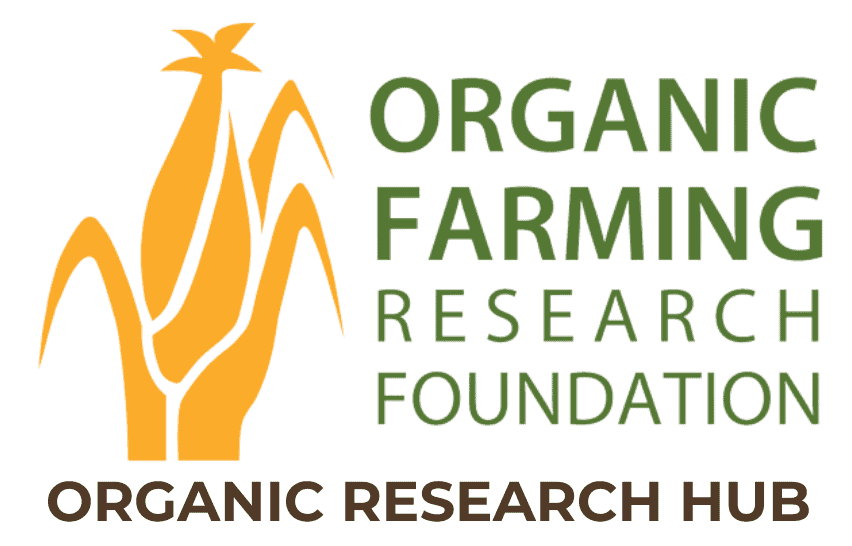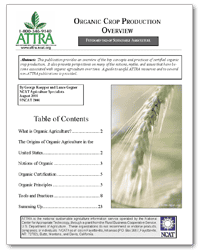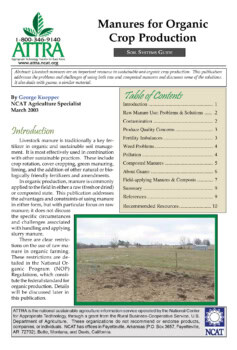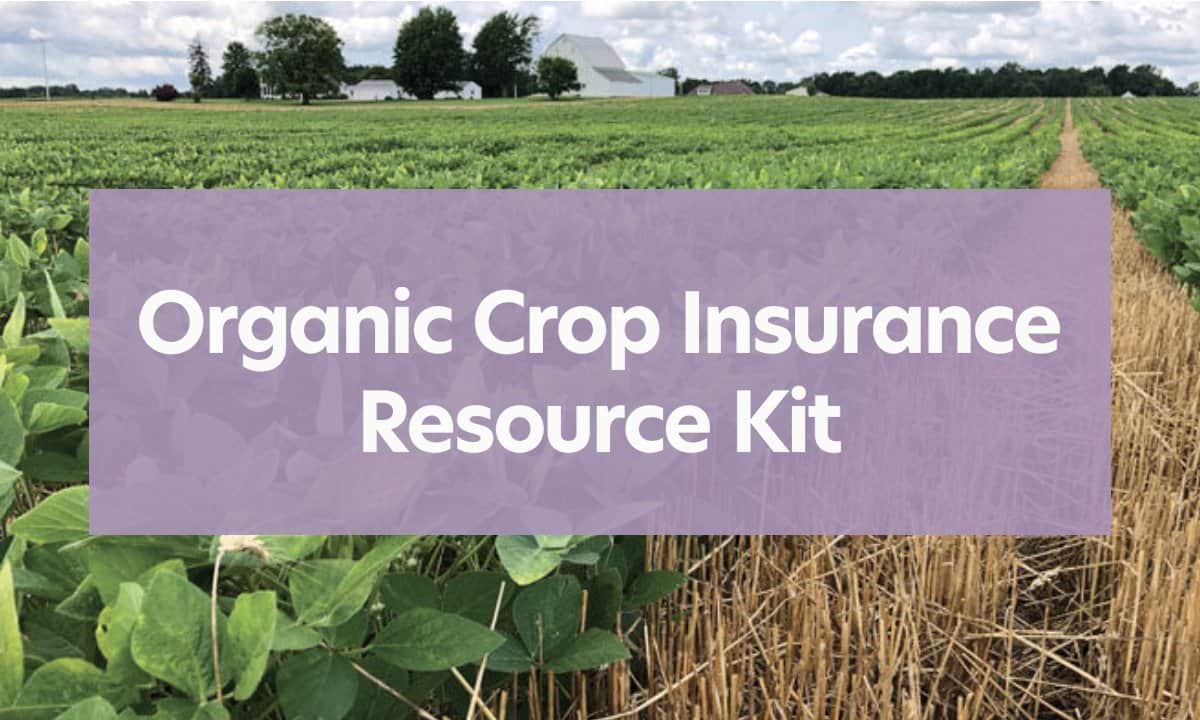Tillage and Crop Sequences for Organic Canada Thistle Management in the Northern Great Plains
Project Director: Christian Larson, Montana State University
Project overview
Throughout the Northern Great Plains, Canada thistle (Cirsium arvense) is a problematic perennial weed in organic systems. Typically, a mixture of cultural (i.e., competitive crops and crop rotation) and mechanical (i.e., tillage) methods are used to manage Canada thistle organically, but more research is needed in order to optimize such practices.
The main objective of this study was to identify crop sequences and tillage regimes that could suppress Canada thistle in organic wheat systems. Over a four year period (2019-2023) field experiments were conducted at two sites in central Montana. The trials compared eight cropping sequences crossed with two tillage systems, and measured Canada thistle occurrence, stem density, and biomass, as well as wheat crop yield in the final year of the study.
Farmer takeaways
- To organically manage Canada thistle in arid regions, consider utilizing alfalfa grazed by sheep or employing multiple years of intensive fallow.
- When integrating perennial forage crops before annual cash crops, a subsequent year of fallow may be necessary to restore soil moisture, particularly in low-moisture conditions.
Project objectives and approach
Identify effective crop sequences and tillage regimes for suppressing Canada thistle (C. arvense) in semiarid organic wheat (T. aestivum)
Trials were conducted between 2019 and 2023 at two sites in eastern Montana: Central Agricultural Research Station, Moccasin, MT and Fort Ellis Research Farm, Bozeman, MT. Eight four-year crop sequences and two tillage treatments were compared across the duration of the trial.
Crop sequences were made up of common annual and perennial Montana field crops and designed to reflect a spectrum of crop growth/competition (Table 1). Tillage treatments were “standard” or “reduced”, with standard consisting of pre-plant and post-harvest tillage, and in-season tillage for cover cop termination. Reduced tillage efforts consisted of techniques such as undercutting, shallower tillage, and sheep grazing to terminate non-grain crops.
Cirsium arvense data measuring occurrence (present or absent), biomass, and stem counts were collected from quadrats placed in each plot. Data were analyzed so that the single and interaction effects of tillage, crop sequence, and year could be assessed.
Determine the effect of those crop sequences and tillage systems on subsequent cash crop production
In the fourth and final year of the study, all sequences were planted to spring wheat in order to compare grain yield. At physiological maturity, crops were harvested and grain yield was determined from sub-plot samples using a small-plot combine. Canada thistle data were also collected as in previous years of the study.
Table 1. Crop sequences, associated crops, and years planted.
| Crop Sequence | Crops (Scientific Names) | Years |
|---|---|---|
| 1. Alfalfa | Barley (Hordeum vulgare), Alfalfa (Medicago sativa) | 1, 2, 3 |
| 2. Forage grains | Spring wheat (Triticum aestivum), Triticale (x Triticosecale), Foxtail millet (Setaria italica) | 1, 2, 3, — |
| 3. Spring wheat (SW)-lentil-pea | Spring wheat (Triticum aestivum), Lentil (Lens culinaris), Sweet clover (Melilotus officinalis), Field pea (Pisum sativum) | 1, 2, —, 3 |
| 4. Lentil-SW-pea | Lentil (Lens culinaris), Spring wheat (Triticum aestivum), Sweet clover (Melilotus officinalis), Field pea (Pisum sativum) | 1, 2, —, 3 |
| 5. SW-double forage | Spring wheat (Triticum aestivum), Barley (Hordeum vulgare), Field pea (Pisum sativum) | 1, 2, 3 |
| 6. Lentil-pea-hemp | Lentil (Lens culinaris), Sweet clover (Melilotus officinalis), Field pea (Pisum sativum), Hemp (Cannabis sativa ssp. sativa) | 1, —, 2, 3 |
| 7. Cover Crop Mixture-SW | Spring wheat (Triticum aestivum), Barley (Hordeum vulgare), Emmer (Triticum dicoccum), Oats (Avena sativa), Field pea (Pisum sativum), Lentil (Lens culinaris), Faba bean (Vicia faba), Yellow mustard (Sinapis alba), Radish (Raphanus sativus), Turnip (Brassica rapa ssp. rapa) | 2, 1, 3, 1, 3, 1, 3, 1, 3, 1, 3, 1, 3, 1, 3, 1, 3, 1, 3 |
| 8. Double fallow | Spring wheat (Triticum aestivum), Tilled fallow | 1, 2, 3 |
Key findings
Perennial forage crops like alfalfa may provide better Canada thistle suppression than crop rotations that include annual crop species, and multiple years of fallow with intensive tillage is also an effective approach to suppression of Canada thistle
- Canada thistle occurrence
- Over time, Canada thistle occurrence decreased in the alfalfa and fallow sequences and increased in all others. When that fallow sequence returned to cropping in Year 4, Canada thistle presence rebounded and was found in almost 40% of quadrats.
- In the final year, a significant effect of crop sequence was observed, where the probability of Canada thistle occurrence was lower in the alfalfa sequence (15%) and the fallow (40%), compared to all other crop sequences (50-75%).
- Canada thistle stem density
- Over time, stem dentistry decreased only in the alfalfa and fallow crop sequences, with no difference in the other crop sequences. Lower stem density in the alfalfa and fallow crop sequence was also seen in the final cropping year of the study.
- For alfalfa and fallow sequences, stem density was significantly lower under standard tillage compared to reduced tillage, while tillage did not have a significant effect on stem density for the other crop sequences.
- Canada thistle biomass
- There were significant site differences for Canada thistle biomass, with the CARC site having considerably less biomass than the Fort Ellis site.
- Over time, as with the other Canada thistle parameters, crop biomass declines in the alfalfa and fallow treatments. Tillage did not have a significant impact on Canada thistle biomass throughout the study.
Perennial forage crop sequences with annual crops can reduce cash crop yields in semi-arid environments
- Grain yields differed considerably between the CARC and Fort Ellis sites, at 380 vs 1510 kg ha-1, respectively.
- At CARC, tillage effects were only significant in the alfalfa sequence, with lower grain yield in the standard tillage compared to the reduced tillage, likely due to moisture stress. Among sequences, the alfalfa treatment had lower Year 4 grain yields than all other sequences.
- At Fort Ellis, grain yield was highest in alfalfa and fallow sequences, with no other significant treatment effects detected.
Resources
Larson, C. D., Hettinger, K., Carr, P. M., Miller, P. R., Volkman, M., Chichinsky, D., & Seipel, T. (2024). Tillage and crop sequences for organic Cirsium arvense management in the Northern Great Plains. Agronomy Journal, 116, 2701–2714.
Read MoreLocation
MontanaCollaborators
Kara Hettinger, Montana State University
Patrick Carr, Montana State University
Perry Miller, Montana State University
McKenna Volkman, Montana State University
Daniel Chichinsky, Montana State University
Tim Seipel, Montana State University
SARE Region
Western
TOPP Region
Northwest
Topic
Soil Health, Weed Management, Cropping Systems
Category
Grain and Field Crops
Year Published
2023



